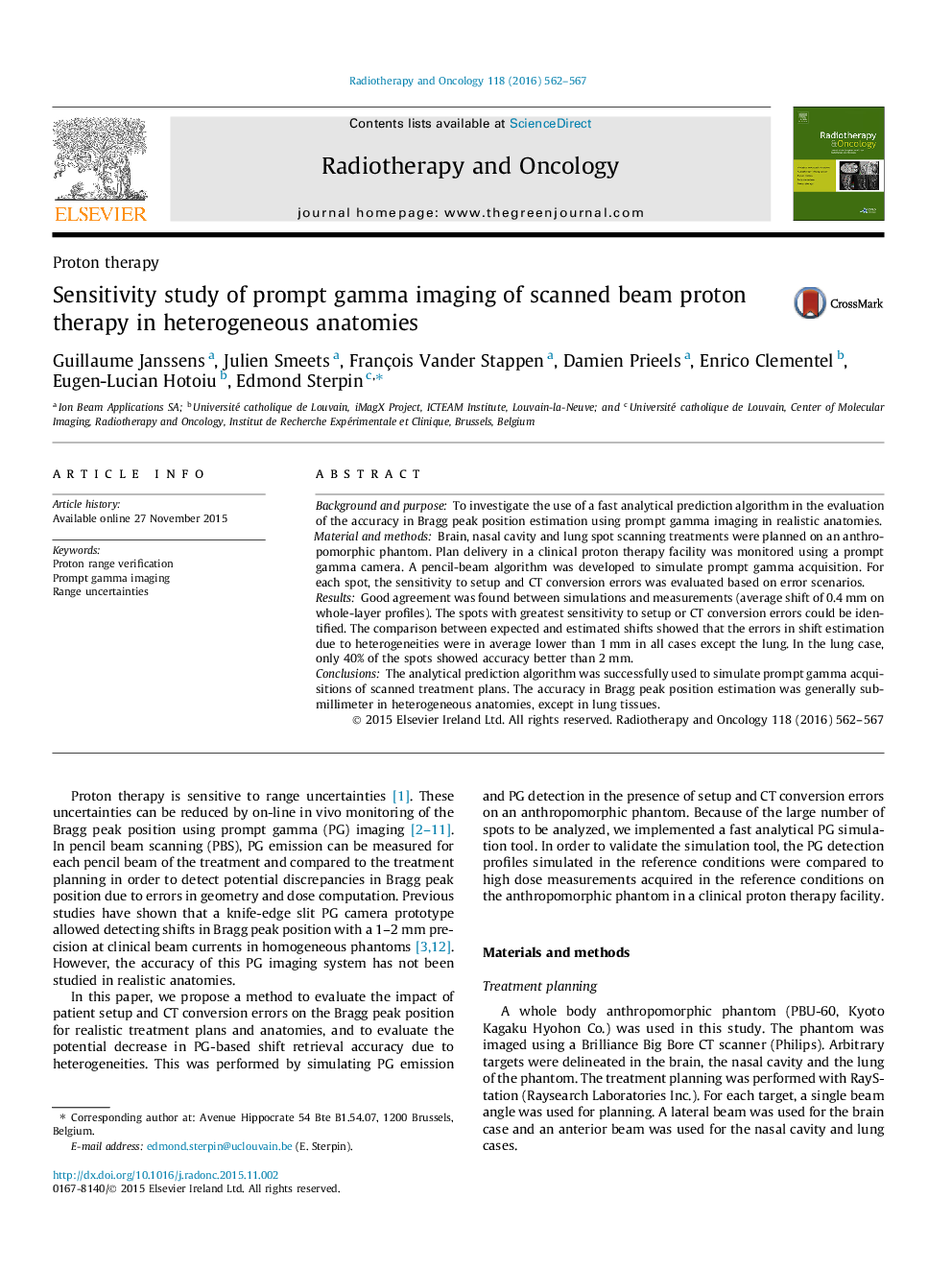| کد مقاله | کد نشریه | سال انتشار | مقاله انگلیسی | نسخه تمام متن |
|---|---|---|---|---|
| 2157212 | 1090768 | 2016 | 6 صفحه PDF | دانلود رایگان |
Background and purposeTo investigate the use of a fast analytical prediction algorithm in the evaluation of the accuracy in Bragg peak position estimation using prompt gamma imaging in realistic anatomies.Material and methodsBrain, nasal cavity and lung spot scanning treatments were planned on an anthropomorphic phantom. Plan delivery in a clinical proton therapy facility was monitored using a prompt gamma camera. A pencil-beam algorithm was developed to simulate prompt gamma acquisition. For each spot, the sensitivity to setup and CT conversion errors was evaluated based on error scenarios.ResultsGood agreement was found between simulations and measurements (average shift of 0.4 mm on whole-layer profiles). The spots with greatest sensitivity to setup or CT conversion errors could be identified. The comparison between expected and estimated shifts showed that the errors in shift estimation due to heterogeneities were in average lower than 1 mm in all cases except the lung. In the lung case, only 40% of the spots showed accuracy better than 2 mm.ConclusionsThe analytical prediction algorithm was successfully used to simulate prompt gamma acquisitions of scanned treatment plans. The accuracy in Bragg peak position estimation was generally sub-millimeter in heterogeneous anatomies, except in lung tissues.
Journal: Radiotherapy and Oncology - Volume 118, Issue 3, March 2016, Pages 562–567
